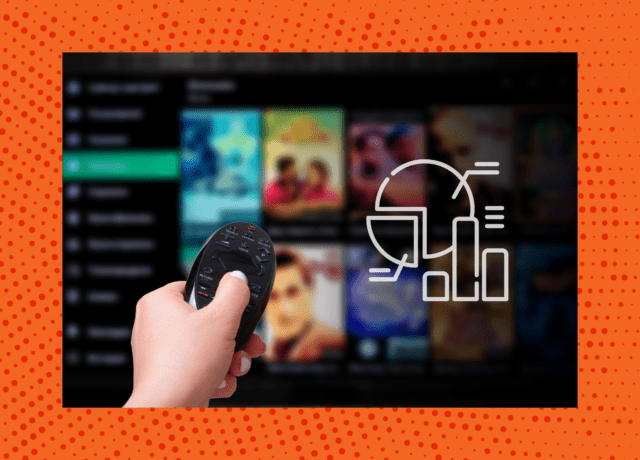In 2021, 5,530 advertisers spent $1.3b on OTT ads across popular services such as Discovery+, Hulu, HBO Max, Paramount+, Peacock, and Pluto TV.
That growth didn’t surprise us. The stay-at-home orders during the pandemic propelled OTT advertising into the mainstream.
What did surprise us, however, was OTT advertising’s recent bump in the road. Despite streaming’s growth—the number of OTT users worldwide increased by 37% between 2018 and 2021—ad buys on Discovery+, Hulu, HBO Max (Discovery+ and HBO Max recently merged into one service, Max), Paramount+, Peacock, and Pluto TV fell by 8% YoY through April 2023.
Contributing to that decrease were advertisers promoting Insurance (Berkshire Hathaway, State Farm, and Progressive), Laundry products (P&G and Reckitt), and Credit Cards (Capital One, Citigroup, and JPMorgan Chase).
But despite hitting a bump in the road, OTT advertising is still alive because plenty of brands are still spending—here’s a look at a few of them.

Pharma’s embrace of digital includes OTT
One of the most significant increases in OTT spending came from an unlikely source: Pharma advertisers.
Through April, Pharma advertisers collectively increased their investment in OTT ads by 97% YoY to $37mm, with the three top spenders—AbbVie, Nutraceutical Wellness (hair growth OTC), and Pfizer—accounting for 40% ($14.9mm) of that investment.
The increased investment from Pharma advertisers comes in tandem with their embrace of digital channels, including YouTube. The shift comes as the healthcare industry adopts technology, and advertisers evolve to meet the habits of today’s consumers and healthcare professionals (HCP).
We can also link the uptick in spending to strategic shifts inside these companies’ walls.
Advertisers at AbbVie, for example, are fighting to recoup potential lost revenue as they lose patent protection of their best-selling drug, Humira, and biosimilars hit the market.
At the same time, advertisers for Pfizer increased their OTT budget at the same time as new Global Chief Marketing Officer, Andreas “Drew” Panayiotou, taking the helm and evolving the company’s marketing strategy.
That said, the increased investment in OTT doesn’t mean Pharma advertisers are abandoning traditional tactics. In Q1, nearly 190 Medical & Pharma companies spent more than $2b on broadcast and cable TV, up 13% from Q1 2022.
QSR Advertisers Beef Up Their Investment in OTT
QSR advertisers spent $33.5mm on OTT through April, representing a 64% YoY increase, thanks to investments from advertisers at Ilitch Holdings (Little Caesars), Roark Capital Group (Arby’s, Dunkin’, etc.), and Yum! Brands (Taco Bell, etc.), who collectively spent $17.5mm (52% of the investment in OTT from QSR advertisers).
While the launch of new sandwiches, including the Steakhouse Garlic Ribeye Sandwich, undoubtedly spurred spending, the increases in 2023 likely have more to do with the recent appointment of Rita Patel as Brand Chief Marketing Officer (CMO).
Patel said, “Arby’s is a truly differentiated brand with a maverick approach to marketing.” She continued, “I’ve learned so much during my time with Buffalo Wild Wings [owned by the same company as Arby’s] and look forward to applying those learnings in my new role.” As Patel settles in, other strategies and tactics from her tenure at Buffalo Wild Wings, which is owned by the same company as Arby’s, may take hold.
Meanwhile, advertisers for Taco Bell increased their investment in OTT as they continued their quest to stand out in the market by any means necessary, which has so far included acquiring the Liberty Bell (not really), Major League Baseball, and a space station.
Auto advertisers aren’t intimidated
The past few years have been a whirlwind for the auto industry.
In 2021, vehicle sales in the U.S. fell by ~15%, marking one of the biggest declines in decades. The industry has steadily worked its way back to pre-pandemic levels, but fears of a recession are now putting car purchases on hold for many, especially Millennials and Generation Z.
Still, the industry is showing some resilience, with vehicle sales expected to grow by 1mm this year—and that’s enough promise for auto advertisers to spend on OTT.
Overall, advertisers promoting Import Models (+110% YoY), Pickup Trucks (+73%) and SUVs (+11%) spent nearly $20mm on OTT ads through April, accounting for 73% of the investment from Auto advertisers.
Spending from Auto advertisers on OTT comes despite caution to kick off the year. Despite being long-time players during the Super Bowl, Auto advertisers throughout most of the industry were noticeably absent during this year’s Big Game.
Eric Haggstrom, Director of Business Intelligence for Advertiser Perceptions, says, “This [the lack of Super Bowl advertising] has less to do with the Super Bowl itself and more to do with individual issues within the automotive industry.” He continued, “The auto industry has been battered by supply chain issues, inflation eating into consumer budgets, and rising interest rates that have made car payments dramatically more expensive.”
Oh, How the Mighty Aren’t Falling
So, is OTT advertising dead? Far from it.
The OTT video advertising market is expected to reach a volume of more than $205b this year.
While the reduction in spending may be surprising, streaming services are too ingrained in society for a freefall. In reality, advertisers are likely reducing their budgets in response to the ongoing economic uncertainty causing consumers to cut streaming out of their budgets.
For more insights, sign up for MediaRadar’s blog here.



